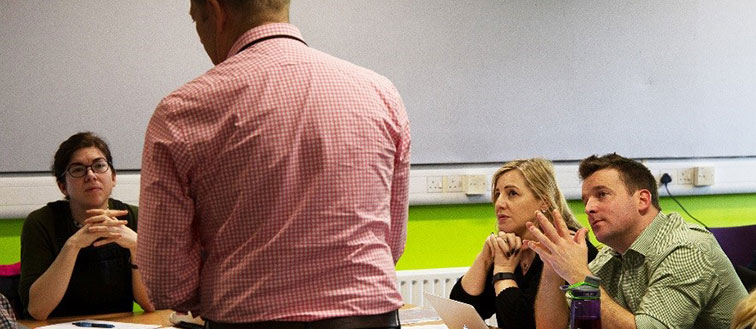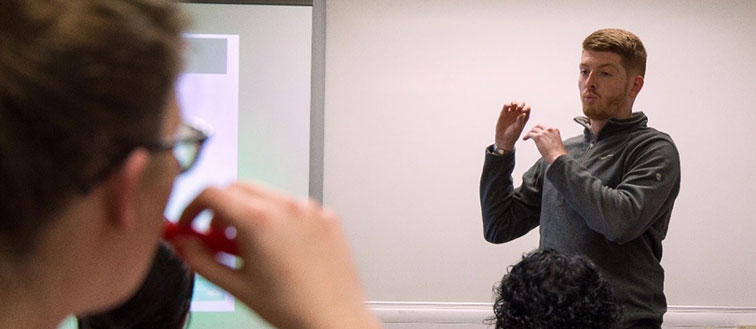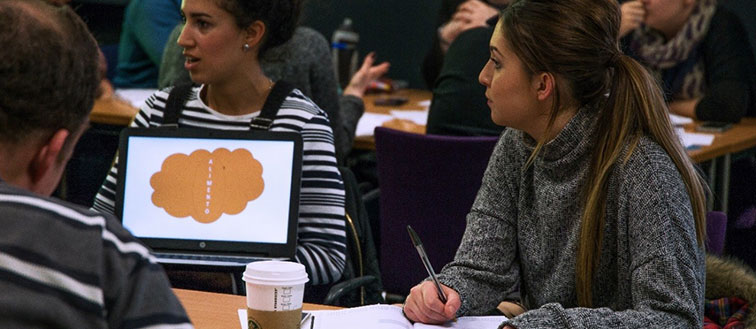A multi-levelled approach to effectively embedding the University's vision for our Graduates' Attributes
Dr Elizabeth White - Research Lead in Initial Teacher Education, University of Hertfordshire

On behalf of the Initial Teacher Education Leadership Team:
- Timothy Roberts - Head of Initial Teacher Education
- Dr Vicki Fitt - Deputy Head of Primary Initial Teacher Education
- Vicky Pateman - Deputy Head of Secondary Initial Teacher Education
- Dr Elizabeth White - Head of School Direct Routes into Teaching
Introduction
The University of Hertfordshire created created 'The Graduate Attributes' (University of Hertfordshire, 2016) to provide a shared vision and common values which characterise the University’s students, to enable them:
'to realise their full potential and to be equipped for professional and personal life in a complex and rapidly changing world' (University of Hertfordshire, 2011).
Inspired by the University's lead in having an explicit vision to underpin our ways of working, the Initial Teacher Education Leadership team realised the need to have a shared Partnership Vision with our Partnership Schools of the attributes that we were seeking to develop in our student-teachers. We decided to work with our Partnership Schools, a year ago, to develop our Partnership Vision for Initial Teacher Education. We wanted this to be genuinely jointly developed in partnership with our school colleagues, therefore we started with a blank page. This became the start of a process (Figure 1) of embedding the University's vision into the Initial Teacher Education programmes through a shared Partnership Vision.
Our desire was to develop a strong values-driven focus to our programmes in the current climate of performativity, as teaching is a values-based profession. We developed a four-fold vision together to equip the student-teachers with the skills that will be essential to their professional lives. It is interesting to see that the Partnership Vision (Figure 2) reflects strongly the University's Graduate Attributes of:
- professionalism, employability and enterprise
- learning and research skills
- intellectual depth, breadth and adaptability
- respect for others
- social responsibility
- global awareness
This re-affirms to us that the values that we hold strong as teacher educators within the University, and situated in Partnership Schools, are common across our intertwined professional and academic lives.
Figure 1 - The process of embedding the vision

Teaching and work-place training
Having established a clear shared vision (Figure 2), we needed to embed this vision across the Initial Teacher Education programmes. This has been accomplished through a process of mapping the sessions in the professional learning modules to the vision (Figure 1) to aid programme design and pedagogic planning.
In order to promote a perspective within the professional learning modules that supports the development of both a grounded and values-based professional identity, we have explicitly linked the sessions to the different aspects of our vision. This gives student-teachers an indication of how they might also approach values-based practice with the children and young people that they are working with in schools and other educational settings. Within these modules we have been also been explicitly highlighting the theoretical underpinning for the different pedagogical approaches that we take, to help student-teachers to understand why certain teaching strategies are successful. In doing this student-teachers can be supported in making their own professional judgements and develop their ability to articulate their pedagogical decisions (Loughran and Berry, 2005; Lunenberg et al., 2007). This approach has correlated well to the greater focus that we are developing on the research-rich and informed nature of our teaching within the School of Education (Roberts et al., 2017). It enables the student-teachers to develop their professional voice and their learning and research skills.
Our vision In partnership we work together to develop teachers will the confidence to: | |
|---|---|
Agency | have the confidence to make professional judgements to enable the development and learning of all |
Professional Voice | articulate how research has informed their practice and contribute to new thinking and new ways of working |
Resilience | respond innovatively to a changing educational landscape |
Social Justice | strive to ensure a child's learning and life chances are not limited by social or economic factors |

We have increasingly incorporated opportunities to support the on-going well-being of teachers, including opportunities to explore the changing landscapes in which teachers work and to stimulate creative responses through sharing models of good practice. This relates to developing the resilience and respect for others. It encourages intellectual depth, breadth and adaptability.
The design of the Initial Teacher Education programmes includes work-place training in at least two contrasting educational settings. This not only enables student-teachers to develop their understanding of the educational landscape, it also provides them with opportunities to see how children and young people can be given access to genuine and appropriate learning opportunities whatever their background. School-based activities linked to taught sessions provide a specific focus to supporting those with special educational needs, those of high ability, those with English as an additional language and those with disabilities. The sessions on unconscious bias challenges student-teachers to be aware of how their own viewpoints influence their expectations of their learners. This supports the vision of developing social justice and social responsibility, awareness of wider world issues and understanding of different cultures and practices (global awareness), and the agency and professionalism of the student-teachers.

Students
At the beginning of the year we have invested time in planning together as the Initial Teacher Education leadership team, in the outworking of our Partnership Vision and a shift in focus so that all of our preparation of student-teachers and mentors, and all of our documentation, started from supporting student-teachers to have a positive impact on pupil learning and progress over time. This was a massive re-focus from being driven by the need for student-teachers to provide evidence that they are meeting the Teachers' Standards (2012). This re-focus has been embraced enthusiastically by our partnership schools and by our external examiners. We are now seeing the impact of all these changes reflected in the feedback that student-teachers are making about the taught sessions, and in their ability to develop a professional voice and articulate clearly the impact that their pedagogical choices are having on individual learners, groups of pupils and whole classes in their school-based training. This is the last part of the process (Figure 1). Student-teachers are putting an increasing value on reading and researching aspects of their practice. An example of this has been highlighted in the quality of the work of the student-teachers on the secondary School Direct salaried route. Within a session they showcased an example of good practice from their own teaching and explained to the other student-teachers what the impact of their chosen pedagogical approach had on pupil learning and progress, and what research or theory underpinned their approach. We have compiled the examples of their creative and research-informed approaches to practice for wider dissemination in 'Sharing Good Practice'.

Summary
In summary, we have developed a multi-levelled process to effectively embedding the University's vision for our Graduates' Attributes (Figure 1). This has been effected through the engagement of our partners. We have surfaced and developed the strong links between our Partnership Vision and the Graduate Attributes, seeking to make them more explicit to our student-teachers. The consequence has been a positive impact on these demonstration of these characteristics through the speech and action of the student-teachers across our programmes.
Read the next thought-piece...
References
- DFE. 2012. Teachers' Standards.
- Loughran, J. and Berry, A. 2005. ‘Modelling By Teacher Educators’. Teaching and Teacher Education, 21, pp.193-203.
- Lunenberg, M., Korthagen, F. & Swennen, A. 2007. The teacher educator as a role model. Teaching and Teacher Education, 23, pp.586-601.
- Roberts, A., White, E., and Bage, G. (2017). Research-rich and informed teaching: what is it, why is it important and what might support its development? CONNECT, 1: A series of position papers from the Centre for Educational Leadership, School of Education. Hatfield: University of Hertfordshire.
- University of Hertfordshire. 2011. The University of Hertfordshire Graduate Attributes. Hatfield: University of Hertfordshire. http://www.studynet2.herts.ac.uk/ltic.nsf/0/03D3B9BE0CDB137D80257E9D005B3696/$FILE/Graduate%20Attributes%20final.pdf
- University of Hertfordshire. 2016. The University of Hertfordshire Graduate Attributes [Online]. Hatfield: University of Hertfordshire.
- University of Hertfordshire. 2017. Sharing Good Practice: Examples of work by Secondary School Direct Salaried trainees.
LINK 2017, vol. 3, issue 1 / Copyright 2017 University of Hertfordshire
